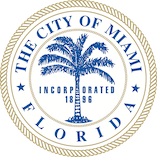Situation
2020 saw an exodus of iconic Silicon Valley brands leaving for other areas of the country. Palantir moved to Denver while Tesla, SpaceX, HP, and Oracle chose Austin. But what really made headlines were the thousands of Californians and New Yorkers leaving tech hotspots and flooding cities with lower costs of living and more affordable housing options. In short, the pandemic––coupled with modern technology––brought remote work to the forefront, and freed up where people could work and live like never before.
Miami has been an under-the-radar tech hotspot for years, with many major venture capitalists having outposts there. These include Shervin Pishevar, a venture capitalist and tech investor, who observed the increasing number of professionals fleeing the traditional tech hubs and saw an opportunity to put Miami on the map.
This realization closely coincided with a viral tweet from Miami’s Mayor, Francis Suarez, in December 2020. In response to a tweet by Founders Fund’s Delian Asparouhov’s (“ok guys hear me out, what if we move silicon valley to miami?”), Mayor Suarez replied, “How can I help?” The internet went into a fever pitch, with the tweet garnering 2.3 million organic impressions in a matter of days. Sensing it was not a moment to be wasted, Pishevar realized this viral message could also make a splash in the physical world. Only this time, the medium would be out-of-home (OOH) advertising.
By repurposing Mayor Suarez’s tweet as creative artwork for billboard ads, the “Move to Miami” campaign was born. Pishevar knew he could make a bold statement with an unapologetically clear call-to-action and would place billboards in the epicenter of the tech world, calling for tech’s top talent to take their talents to South Beach.
Challenge
Pishevar faced the same challenge any other outdoor advertiser faces: how to get the most bang for his buck?
For starters, the timing of the billboards was critical. Mayor Suarez’s viral tweet occured in December of 2020 during the height of COVID-19. So to still have its intended effects, the billboards would need to go up sooner rather than later while workers in San Francisco were still reevaluating their living circumstances and might consider moving to Miami.
Another consideration was location. Peshivar needed the billboard placement to be strategic so it would garner the most impressions and make the biggest splash. As it stands, the city by the bay has over 600 regular and digital billboards to choose from, so it would be imperative to select the right ones.
Creatively, the artwork on the billboard would also be key. They’d have a limited amount of square footage to grab a passerby’s attention, share a compelling CTA, and spur people to action.
The final challenge? While he may be a successful entrepreneur, Pishevar is not a media buyer. Buying outdoor media has traditionally been a heavy lift, with multiple media owners and no easy way to check availability. On his own, Pishevar didn’t know where to start.
Solution
Pishevar knew he needed a hand in managing this campaign. Since it would only run for one month, it was imperative to make the most of the billboards’ placement to maximize impact. To streamline the process and get a window into all of San Francisco’s billboard inventory, Pishevar worked with AdQuick –– the top out-of-home advertising marketplace –– to manage the Move to Miami campaign. This included AdQuick giving recommendations of run times, most effective locations, and even designing the billboard artwork.
In February 2021, two billboards went up in San Francisco for the Move to Miami campaign. The creative was simple, bold and a near replica of Mayor Suarez’s original tweet: “Thinking about moving to Miami? DM me.” The mayor’s Twitter handle was prominently featured. The second billboard featured a laptop screen with palm trees in the background. Who wouldn’t want that view?
One billboard was located right at the connection between Highway 80 and Highway 101. This location is significant as it serves as an entry point into the city from communities south of San Francisco. With a main freeway of the city covered, the second billboard was located on 10th Street and Mission Street, a key thoroughfare to leave the city heading south. These billboards were also strategically placed in between top company headquarters, including AirBnB, Lyft, Slack, and Salesforce –– so employees in the area would see a reminder there was a sunnier alternative within reach.
Results
Within hours of launching, tech workers were DMing Mayor Suarez, sharing pictures of the advertisements, and creating Twitter conversations around moving to Miami. But it wasn’t just tech workers who took notice. The billboards were shared by tech influencers on social media, which only raised the campaign’s profile further.
On February 24, 2021, Alexis Ohanian, a former San Franciscan, current Floridian, and investor in AdQuick tweeted a picture of the “DM me” billboard and wrote, “Billboards, folks. No one wants to take a photo of your Facebook ad, but a photo of your billboard can go viral.”
The campaign made enough noise that it garnered stories in the Miami Herald and the San Francisco Chronicle. Other journalists took notice. Within a month, there were also follow-up articles by top-tier publications like Bloomberg and Forbes calling the Mayor “Miami’s most visible hype man” and “marketer-in-chief”. Not only did Pishevar’s campaign exceed expectations, it planted a flag in the ground and put Mayor Suarez on the national map in a serious way. In total, and within just one month, the Move to Miami campaign, which was geo-targeted for San Francisco, ended up going viral and was seen by approximately 45 million people.
 View More Case Studies
View More Case Studies
